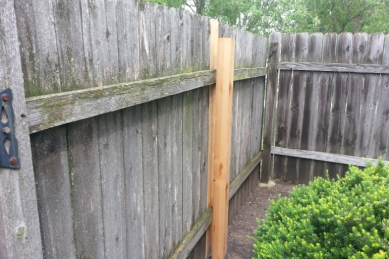
Here's how to transport 12 feet of lumber. You can load lumber by lowering your tailgate. By doing this, the lumber will lie flat and won't block your rear view. It's also much easier to fasten the lumber evenly. Use ratchet straps to secure the lumber so that it doesn't slip out. Finally, tie the ends of lumber together.
Another method is to rent a truck from a home improvement store. The cost of HD trucks is $75 for half an hour. Home Depot has a fleet you can rent to load your lumber. You should stack two or three pieces 2x6 or 8 lumber together. A lumber yard may be able to rent a pickup truck for you if you don’t have one.

After you have loaded the lumber into the truck, make sure you secure it. To secure the lumber in a pickup that has a small bed, you can use its back seat to brace it. It's also helpful to secure the load with a tie down cord or chains. A truck can be rented for a few weeks if you don’t own one. A truck with a larger bed is a good option if you plan to haul heavy loads.
Once the load is secured, you can attach ratchets straps to the truck bed to hold the lumber. Two anchor points must be placed on each side of the pickup truck bed. The straps should be tight enough to prevent the lumber from moving during transport. A red flag will notify other road users that the lumber is being transported. After the lumber has been secured, the driver can begin the process of hauling it.
You need to know the laws if you plan to haul lumber. The lumber must be clearly marked and must not extend more than 3 feet in front of the vehicle. It must also be securely attached to the truck using a red flag. The red flag must clearly be visible in order not to cause damage or accidents. The law also requires that a red flag be visible. Many home centers offer free red flags.

You will need to attach ratchets straps at both the front and the back of your truck bed. A hitch-mounted prop can be attached to support the overhang. This is an excellent way to haul lumber safely. Finally, lock the lumber. It is important to have a secure load as well as a safe route.
FAQ
In what order should home renovations be done?
First, decide where you want everything to go in your renovations. If you're planning on selling your home soon, it is important to consider how you wish to present your home for potential buyers. The design of your living room, bathroom, and kitchen should be the first thing you think about. After you've decided on the rooms that you wish to renovate, it is time to start searching for contractors who are experts in these areas. Finally, once you have hired a contractor, you should begin working on your renovation project.
How many times do I need to change my furnace filter?
How often your family expects to use the heating system in their home will determine the answer. If you plan to leave your house for long periods of time during cold weather months, you may consider changing your filter more frequently. You may be able wait longer between filters changes if you don't often leave the house.
A furnace filter should last for approximately three months. This means you should change your furnace filters once every three months.
Check the manufacturer's guidelines for when you should change your filter. Manufacturers recommend changing your filter after each heating season. Other manufacturers suggest waiting until visible dirt builds up.
You can live in a house while it is being renovated.
Yes, I can live inside a house while I renovate it.
Are you able to live in your house while the renovations are ongoing? It depends on the length of the construction. If the renovation takes less time than two months, then no, you can still live in your home during construction. However, if the renovation project lasts longer than two months, then no, you cannot live in your home while the renovation is taking place.
It is important that you do not live in your home during major construction. You could also suffer from noise pollution and dust caused by the heavy machinery used on the job site.
This is especially true for multi-story houses. If this happens, the sound and vibration caused by the construction workers can cause significant damage to your home and contents.
You'll also need to cope with the inconvenience of living in temporary housing while your house is being renovated. This means that your home won't provide all the amenities you need.
As an example, your washer and dryer will be out of commission while they are being repaired. It will be difficult to bear the smell of paint fumes as well the sounds that workers make.
All these factors can result in stress and anxiety within your family. It is therefore important to plan ahead so that you don't end up feeling overwhelmed by the situation.
To avoid costly mistakes, do your homework before you make any decisions about renovating your home.
You can also consider professional advice from a trusted contractor to ensure smooth running of your project.
How long does it take to complete a home renovation?
It depends on how large the project is, and how long you spend on it each day. An average homeowner will spend three to six hours a week on the project.
Can I rent a dumpster?
After completing a home renovation, you can rent an dumpster. Renting a dumpster to dispose of your trash is a great option.
Statistics
- On jumbo loans of more than $636,150, you'll be able to borrow up to 80% of the home's completed value. (kiplinger.com)
- The average fixed rate for a home-equity loan was recently 5.27%, and the average variable rate for a HELOC was 5.49%, according to Bankrate.com. (kiplinger.com)
- According to the National Association of the Remodeling Industry's 2019 remodeling impact report , realtors estimate that homeowners can recover 59% of the cost of a complete kitchen renovation if they sell their home. (bhg.com)
- It is advisable, however, to have a contingency of 10–20 per cent to allow for the unexpected expenses that can arise when renovating older homes. (realhomes.com)
- Design-builders may ask for a down payment of up to 25% or 33% of the job cost, says the NARI. (kiplinger.com)
External Links
How To
How do I plan a whole house remodel?
Planning a home remodel takes planning and research. Before you start your project, here are some things to keep in mind. It is important to determine what type of home improvements you are looking to make. There are several categories you can choose from, such as bathroom, kitchen, bedroom, living area, and so on. Once you know which category you would like to work on, you'll need to figure out how much money you have available to spend on your project. If you do not have any previous experience in working with homes, it is best that you budget at least $5,000 per bedroom. If you have some previous experience, you may be capable of getting away with a lower amount.
Once you know how much money your budget allows you to spend, then you will need to decide how big a job it is you are willing to take on. If your budget only allows for a small renovation of your kitchen, you will be unable to paint the walls, replace the flooring or install countertops. If you have the money to do a complete kitchen remodel, you will be able to handle almost anything.
Next, you need to find a contractor who is experienced in the type project that you want. You will be able to get great results and avoid a lot more headaches down in the future. You should begin gathering materials and supplies after you've found a competent contractor. Depending on the size of your project, you may need to buy everything from scratch. However, you won't have to worry about finding the exact item you are looking for in the many pre-made shops.
Now it's time for you to start planning. You will first need to sketch out an outline of the areas you plan to place appliances and furniture. The next step is to design the layout of the rooms. Remember to leave enough space for outlets and plumbing. Make sure to position the most visited areas close to the front door. Visitors can also easily access them. The final step in your design is to choose colors and finishes. You can save money by using neutral colors and simple designs.
Now it's time for you to start building. Before you start any construction, be sure to check the local codes. Some cities require permits. Other cities allow homeowners without permits. When you're ready to begin construction, you'll first want to remove all existing floors and walls. Next, you'll lay down plywood sheets to protect your new flooring surfaces. Then, you'll nail or screw together pieces of wood to form the frame for your cabinets. Finally, attach doors and windows.
You'll need to finish a few final touches once you're done. You might want to cover exposed pipes or wires. To do this, you'll use plastic sheeting and tape. It's also a good idea to hang mirrors and photos. Keep your work area tidy and clean at all times.
These steps will ensure that you have a beautiful and functional home, which will save you tons of money. Now that you know how to plan a whole house remodeling project, you can go ahead and get started!